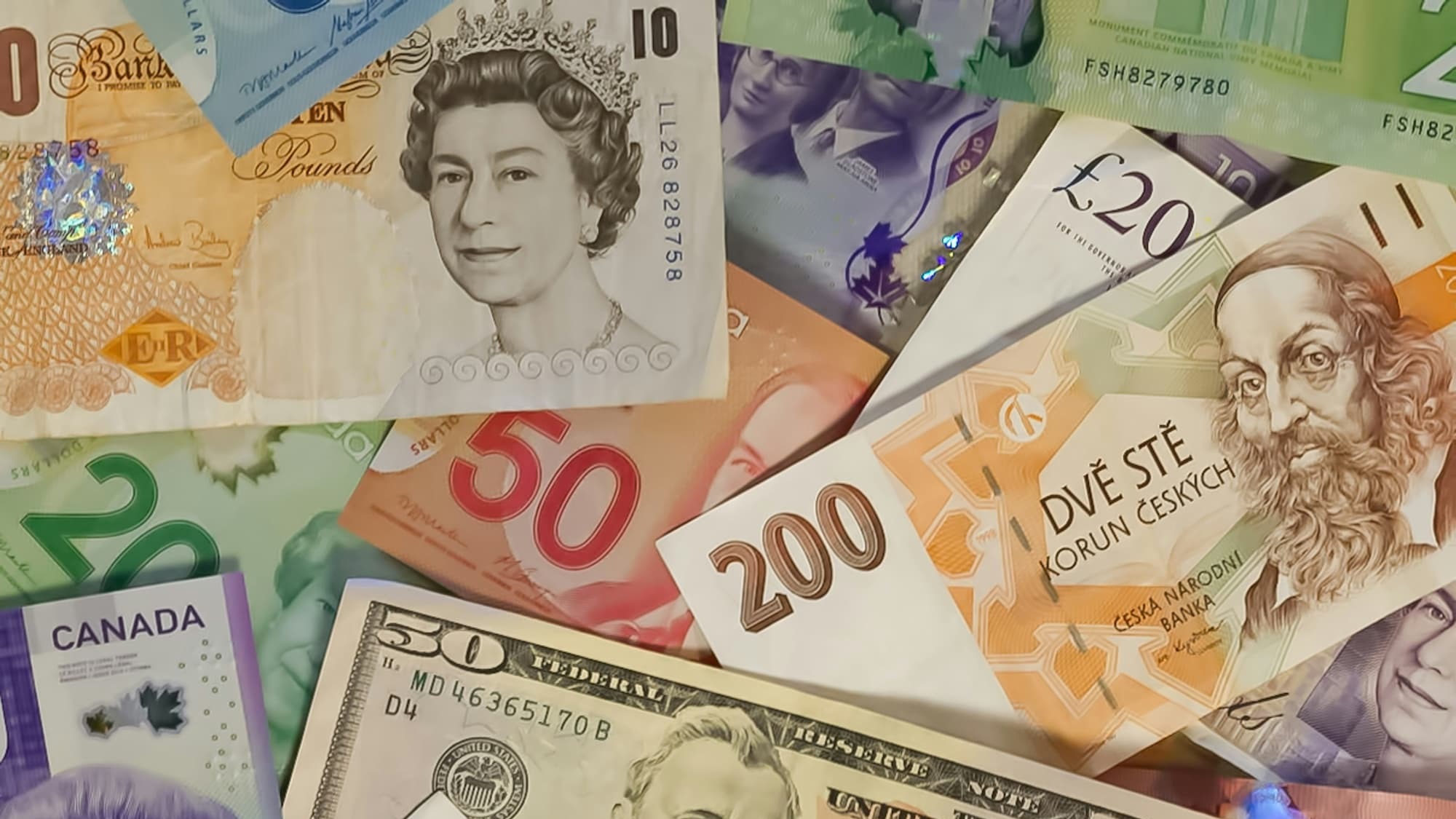 Your Money
Your Money Payment Receipt: What It Is, What It’s For, and How to Obtain It
A payment receipt is issued after purchases, transfers, or payments. Learn how to obtain a payment receipt and its uses.



The world’s cheapest currencies reflect those economies facing serious challenges. Among them, the Iranian Rial stands out as having the lowest value, notably weakened against the US dollar.
Hence, the Iranian Rial tops today’s list, where you’ll discover nine other currencies that follow as the weakest. We’ll also explain how these cheapest currencies are identified and why they lose their value.
It’s determined by evaluating its exchange rate compared to more stable global currencies, like the US dollar or the euro. This shows how capable a currency is of purchasing goods and services in the international market.
In general, a currency’s devaluation results from multiple factors—for example, poor economic management or high inflation. Such conditions erode confidence in the currency, causing its value to drop drastically compared to stronger currencies.
Consequently, the weakest one is the currency that requires the greatest number of units to equal one unit of a stable currency.
The Iranian Rial represents the economy of the Islamic republic, which is the most populous in the region, with over 88 million inhabitants. It also occupies the lowest spot among global currency values.
Its story began following the 1979 Islamic Revolution, specifically after the monarchy’s collapse and the establishment of an Islamic regime, which triggered a massive capital flight. Before these events, one rial was worth about one cent of a dollar.
But the currency’s weakness became entrenched under international economic sanctions and political tensions. This situation persists to the present day, with 1 USD equating to around 42,282 IRR. Meanwhile, banknotes in circulation go up to denominations of 10,000 rials.
The Iranian Rial is the cheapest currency mainly due to international economic sanctions, which restrict trade and access to the global financial system, thereby weakening its demand.
Additionally, the Islamic republic depends heavily on oil revenues, so sanctions—along with fluctuating oil prices—directly hit its economy.
It’s worth noting that runaway inflation and nontransparent government economic policies have worsened the problem. Strict currency controls have also fueled an active black market where the exchange rates are even more unfavorable.
The Iranian Rial is one of the world’s cheapest currencies in terms of value against the dollar. However, in recent assessments (2024), the Brazilian Real is the most devalued currency, according to figures presented by bloomberglinea.
Below is a list of the five most devalued currencies globally based on that same data:
1. The Brazilian Real (Brazil): –12.8%
2. The Mexican Peso (Mexico): –11.5%
3. The Hungarian Forint (Hungary): –4.0%
4. The South Korean Won (South Korea): –4.0%
5. The Swedish Krona (Sweden): –3.6%
These currencies have experienced significant depreciations against the dollar.
Below is a ranking of the 10 cheapest currencies in the world and the reasons behind them.
The Iranian Rial tops the list due to international sanctions limiting trade. Its political instability and hyperinflation have also contributed to the currency’s drastic weakening.
Much of Cambodia’s economy runs on US dollars, leaving the riel stuck as a weak currency. Additionally, its global competitiveness is limited by lack of economic diversification.
Its weakness stems from exporting goods of low added value, along with an agriculture-dependent economy. Inflation and price swings also affect its stability.
Despite Vietnam’s economic growth, the dong remains among the cheapest currencies due to the country’s gradual shift toward a market economy and the barriers to attracting foreign investment.
Serious economic and social challenges in Sierra Leone have weakened its currency. Dependence on mineral resources, healthcare crises, and high inflation have accelerated the leone’s devaluation.
The Lao kip’s decline is driven by a low level of foreign investment and reliance on resource exports. This is exacerbated by persistent inflation and limited trade volumes.
The rupiah faces pressure from Indonesia’s heavy dependence on commodity exports and shrinking foreign currency reserves, along with substantial vulnerability in external investments.
The Uzbek som is one of the cheapest currencies due to a transitioning economy with inadequate reforms. A weak industrial base and structural issues such as inflation and unemployment worsen the situation.
Various combined factors keep the franc among the world’s weakest currencies. Recurring political instability, unfavorable socioeconomic conditions, and poor management hamper Guinea’s sustainable growth.
Paraguay’s currency faces numerous challenges that undercut its regional competitiveness, keeping it among the cheapest. These include global price fluctuations, inflationary pressures, and limited economic diversification.
The Cheapest Currencies and Their Value in USD:
Currency | Code | Country | Exchange Rate |
1. Iranian Rial | IRR | Iran | 1 IRR = $0.0000236237 USD |
2. Cambodian Riel | KHR | Cambodia | 1 KHR = $0.000249508 USD |
3. Ugandan Shilling | UGX | Uganda | 1 UGX = $0.000273241 USD |
4. Vietnamese Dong | VND | Vietnam | 1 VND = $0.0000392676 USD |
5. Sierra Leonean Leone | SLL | Sierra Leone | 1 SLL = $0.0000439312 USD |
6. Lao Kip | LAK | Laos | 1 LAK = $0.0000458892 USD |
7. Indonesian Rupiah | IDR | Indonesia | 1 IDR = $0.0000616012 USD |
8. Uzbek Som | UZS | Uzbekistan | 1 UZS = $0.0000776700 USD |
9. Guinean Franc | GNF | Guinea | 1 GNF = $0.000115787 USD |
10. Paraguayan Guarani | PYG | Paraguay | 1 PYG = $0.000128549 USD |
Exchange rates from December 26, 2024 according to xe.com’s converter.
Currencies lose value both from internal issues and global factors, and decisions can also impact confidence in their stability.
Key reasons behind this phenomenon:
Inflation. When a country’s inflation exceeds that of its trade partners, its goods and services become more expensive and less competitive, thus weakening its currency.
Instability. Political crises generate uncertainty and distrust among investors, leading to capital flight that pushes down the currency’s value.
Trade balance deficits. If a country imports more than it exports, the demand for foreign currency grows, weakening its own currency.
Low interest rates. These can reduce foreign investment due to lower returns.
Speculation. Negative perceptions about a currency can spark massive sell-offs in the markets, accelerating devaluation.
Moreover, external factors can trigger sudden depreciations, such as a global crisis, commodity price shifts, or natural disasters in the country.
The world’s cheapest currencies share similar traits, though each case has its nuances. If you look closely, high inflation, certain economic policies, or dependence on vulnerable economic sectors are common. But there are other factors as well, such as fluctuation in commodity prices, that contribute to their depreciation.
So it’s a mix of internal and external problems.
Despite their low value in global markets, these currencies remain in use in their local economies. Everyday transactions—like writing checks or sending money transfers—persist.
Still, you can explore other methods so your money isn’t exposed to these consequences. In that context, DolarApp becomes an innovative alternative for users in Mexico, Colombia, and Argentina.
With us, you can gain stability and convenience in the face of possible peso fluctuations, as you can operate with digital dollars. Furthermore, you have the option to switch your balance from one currency to another directly in the app at a fair exchange rate.

The world has borders. Your finances don’t have to.
 Your Money
Your Money A payment receipt is issued after purchases, transfers, or payments. Learn how to obtain a payment receipt and its uses.

 Your Money
Your Money Discover what an investment fund is and how it works to make your money work for you with the help of professional fund managers.

 Your Money
Your Money You can send money from Mexico to the United States through Walmart. Find out how to do it and what the costs are for using this service.


